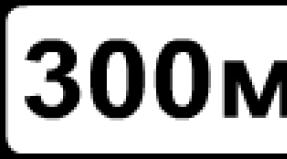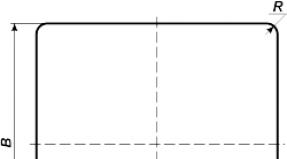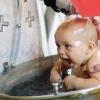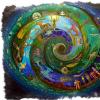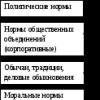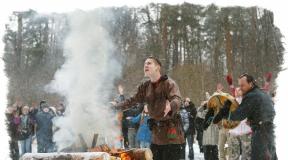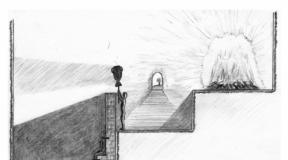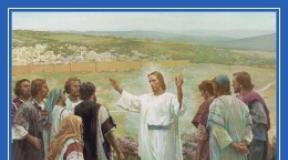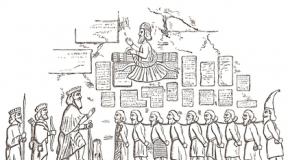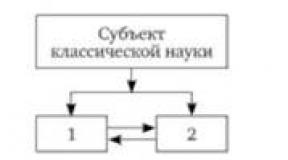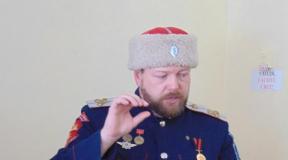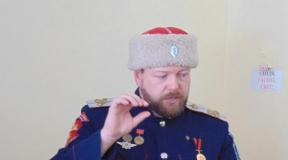Valdai Monastery of the Iveron Icon of the Mother of God. Valdai Iversky St. Lakery Mother of God Monastery
Address: Selvitsky Island, Valdai District, Novgorod Region, Russia. Coordinates: 57.9892224, 33.30542749999995 . Telephone of the pilgrimage center: + 7-911-614-66-94. The monastery is open for visits from 7-00 to 21-00. Tours of the monastery can be booked in the church shop of the main cathedral or by phone. Accommodation and meals in the monastery are strictly by appointment, preferably for a month.
On one of the beautiful islands of Valdai Lake, among the virgin forests, Iversky Monastery is located. It embodied the desire of Nikon, the patriarch of all Russia, to create a monastery similar to that located on Athos and in the same architectural traditions. For many years, it became the focus of spirituality in the Russian land. Today, the monastery architectural ensemble is completely restored and attracts thousands of tourists and pilgrims annually.
How to get to the holy place
Today, anyone can get into the Iversky Monastery - every believer is welcome here. There are several ways to do this:
- The train to Valdai is most convenient from Moscow. To do this, choose a flight to Pskov. From the Leningrad station he leaves at 20:23, and you will be at the place at 2:04. The price of the trip is from 772 rubles.
- it is better to get by bus from St. Petersburg. There is a direct route to Valdai (12:45), as well as a transit route (8:25), following to Demyansk. Travel time will take 5-6 hours. The cost of such a trip is 750-800 rubles.
- It’s also easier to get by car, because Valdai is located on the highway connecting Moscow and St. Petersburg. In time, a car trip from the capital will take about 6 hours, from the Northern capital - 4 hours.
From Valdai itself, take a taxi or personal transport in a southeast direction to the M-10 highway, and then east to the first left (stop "Cheryomushki"). Next, you will also need to turn left - the road will lead you through about. Mountain ash on about. Selvitsky, where the monastery is equipped.
Where to stay in Valdai
For pilgrims and tourists visiting the Valdai Monastery, there are various accommodation options. Those wishing to settle in a monastery hotel should contact the pilgrimage center. Both large groups and individual pilgrims need a preliminary agreement for the month, as well as its confirmation. In the refectory, only those living in the hotel eat and strictly according to the schedule, ordering their participation in advance. Check-in should be done before evening service. For living donated 1000 rubles per day for one place.
For those who decide to stay in the city, there are comfortable hotels with reasonable prices and great hotel complexes. For families with children, mini-hotels are more suitable, where children are placed free of charge until the age of seven. On the picturesque shores of the lake there are numerous pensions and rest houses offering country houses and cozy cottages. A convenient budget option is the private sector near the monastery. Here you can find comfortable accommodation, the prices for which depend on the area, living conditions and distance to the monastery. Prices mainly range from 1,000 to 4,500 thousand rubles.
Variety of catering establishments
In the vicinity of Lake Valdai there is a large selection of cafes and restaurants where you can have a delicious lunch. The most popular cafes are Uyezdnoe and Urartu. The latter offers dishes of Armenian and Russian cuisine, everything is very tasty and of high quality, portions are large, but inexpensive.
In the "Uyezdny" one can taste delicious pancakes and other traditional dishes of Russian cuisine, the prices of which are quite low. Inexpensive and cozy cafe "Compound" is clean and reasonable prices. Homemade bread and delicious pastries are baked here.
Wpcafe is a place where you can sit quietly with a glass of beer and have a tasty snack. Cafe-restaurant "Together" - an institution for a family dinner with a cozy atmosphere and attentive service. A wonderful selection of dishes is offered, and they are prepared quickly and tasty.
In the Rybnoye Mesto restaurant you can taste delicious trout fish soup for only 150 rubles, other dishes are also excellent in taste - grilled carp, salted mushrooms, homemade salting, there is a choice for the child. And lunch is so satisfying that you can not have dinner. They serve very quickly, and after eating you can stroll through the picturesque surroundings.
Features of visiting the monastery
 When visiting the monastery complex, it must be remembered that not only in it, but on the whole island, life goes according to a strict charter. In the courtyard of the monastery there are signs with signs, and on the official website you can get acquainted with the rules of visiting. On the shores, even outside the walls, you can’t sunbathe or swim, let alone have a picnic or behave noisily, cheekily. This prohibition does not apply to other rivers and lakes; tents of vacationers are scattered everywhere. Smoking is strictly prohibited inside the monastery.
When visiting the monastery complex, it must be remembered that not only in it, but on the whole island, life goes according to a strict charter. In the courtyard of the monastery there are signs with signs, and on the official website you can get acquainted with the rules of visiting. On the shores, even outside the walls, you can’t sunbathe or swim, let alone have a picnic or behave noisily, cheekily. This prohibition does not apply to other rivers and lakes; tents of vacationers are scattered everywhere. Smoking is strictly prohibited inside the monastery.
Orthodox people in front of the temple are recommended to commit sign of the cross and a bow, and inside you need to put candles in the saints and slowly pray and only then make a request with which they arrived in this holy place. Loud conversations or phone calls are inappropriate in the church, they must be turned off before entering. For meetings with priests and ministers, prior arrangement is desirable.
Great importance is attached to appearance, since it is an indicator of the internal state. According to the dress code, in the monastery territory it is allowed to be only in clean, neat clothes, appropriate for the floor. Women should be in dresses with long sleeves and a closed collar. If there are no necessary things with you, long skirts will be offered at the entrance. Pants are not welcome - like men's clothing. It is not recommended to use bright cosmetics and perfumes with a rich aroma. Men should wear trousers who have arrived in shorts and will also have to use skirts. Women's hair should be covered with a scarf, and long hair in men just need to be carefully tied with an elastic band so that they do not touch the shrines.
The rules for visitors indicate that photo or video shooting can be carried out only after the blessing of the holy father, and in order to see him, you must ask the church ministers. Permission to shoot can be obtained at the pilgrimage center. A large asphalt parking lot is organized right at the monastery walls, opposite the church shop. There is a second parking lot, a little smaller, about half a kilometer to the point of interest. There are always empty seats on it, even if the first is completely full.
The History of the Iversky Monastery
 Its foundation is connected with an amazing vision that visited Patriarch Nikon, back then the Novgorod Metropolitan, during a trip to Solovki. After a little time, churches were erected and consecrated - the Cathedral of the Icon of the Mother of God and St. Philip, both wooden. Having visited a grand construction site for the first time, the patriarch lowered the gospel and the cross to the bottom of the lake, calling it a Holy, and the word Svyatoozersky was added to the name of the monastery. Soon, the tsar’s diploma assigned him a lake with islands and settlements, and other cloisters of Novgorod land. His brethren from several dozen people involved in printing and bookbinding settled. The holy relics of Jacob Borovichsky, who were in a small chapel, next to a healing spring, were also transferred to it.
Its foundation is connected with an amazing vision that visited Patriarch Nikon, back then the Novgorod Metropolitan, during a trip to Solovki. After a little time, churches were erected and consecrated - the Cathedral of the Icon of the Mother of God and St. Philip, both wooden. Having visited a grand construction site for the first time, the patriarch lowered the gospel and the cross to the bottom of the lake, calling it a Holy, and the word Svyatoozersky was added to the name of the monastery. Soon, the tsar’s diploma assigned him a lake with islands and settlements, and other cloisters of Novgorod land. His brethren from several dozen people involved in printing and bookbinding settled. The holy relics of Jacob Borovichsky, who were in a small chapel, next to a healing spring, were also transferred to it.
The local printing house became the second in Russia after the sovereign's printing yard and the first in the province. Here various crafts developed - wood carving, icon painting, the manufacture of colored tiles, the remains of which can still be seen in one of the buildings. By this time it was finished and solemnly, in the presence of numerous representatives higher clergy, consecrated the Assumption Cathedral, striking monumentality. For its construction, the highest place on the island was chosen. To this day, the patriarch ordered a huge 35-pound bell, cast at his own expense and with his image, and from Moscow they delivered a beautiful copy of the miraculous icon of the Iveron Mother of God. A five-tier gilded iconostasis was installed in the church, and a wonderful chandelier in the form of a tree decorated with flowers and birds brightly illuminated the magnificent decoration.
The monastery, which received first-class status and had multiple privileges, flourished until the 60s. XVII century - until the period of disgrace of Patriarch Nikon. Then all his parishes were closed and transferred to the treasury - as if they were not educated according to the charter. The construction of the Iversky monastery was also suspended. However, the sentence was soon canceled, and she was completely restored in her rights. By the middle of the 18th century, a two-story Corpus of Cells appeared here, adjacent to the Church of St. Michael the Archangel. The building - unlike other buildings - is made in the Moscow Baroque style with its characteristic white-stone carvings in the decoration of platbands. It practically did not undergo reconstruction and was preserved in its original form. One of the oldest is Vodovzvodnaya Tower, or Konnaya Tower, built in the 18th century, and later the Stable Cell Corps was added to it.
Famous Secularization Reform Catherine II of the mid 1770s thoroughly undermined the foundations of the former monastic life. All church possessions were transferred to the state, a good half of the parishes were abolished, and the remaining ones were supposed to receive a certain amount of maintenance depending on their status or to exist by processing nearby uninhabited lands. Although the Iversky monastery received first-class status, however, the financial content was barely enough for existence. He began to decline, the buildings were dilapidated, the number of monks was reduced, there were only those who devoted themselves to the ascetic lifestyle and obey a strict charter. After the revolutionary events, the monastery was looted, and within its walls were a museum, a forest school, and a recreation center.
Only in the 90s. restoration work began - the buildings were repaired, the bell tower was updated, heating was carried out, so that services can be carried out at any time of the year. Restoration completed at the beginning of this century. The consecration of the restored Iversky Cathedral, the former Assumption Cathedral, to which its shrine - the Iveron Icon of the Mother of God was returned, took place. It has been stored in the local church for decades. Beautiful craftsmen from Chrysostom made a precious robe for her. It was decided to cover the domes of the cathedral with gilding. A museum dedicated to the history of the monastery and its founder has also been opened.
Monastery Shrines
 Assumption Cathedral - main temple Monastery, is the largest Orthodox object, erected in Russia in the XVII century. The majestic snow-white building, decorated with five domes, dazzling with gold, is distinguished by its simplicity of forms. It is built in the shape of a square, consisting of three naves, and is surrounded by a gallery with a porch. Temple vaults are supported by six huge pillars. The walls are painted with stories from the story. athos Monastery from the life of saints. Since the monastery underwent several reconstructions, the original paintings of local masters were not preserved and restored according to descriptions. The frescoes of the 19th century were restored. Ancient oak doors with unique carvings and forged lattices remained unchanged. The new carved iconostasis was reconstructed from surviving documents.
Assumption Cathedral - main temple Monastery, is the largest Orthodox object, erected in Russia in the XVII century. The majestic snow-white building, decorated with five domes, dazzling with gold, is distinguished by its simplicity of forms. It is built in the shape of a square, consisting of three naves, and is surrounded by a gallery with a porch. Temple vaults are supported by six huge pillars. The walls are painted with stories from the story. athos Monastery from the life of saints. Since the monastery underwent several reconstructions, the original paintings of local masters were not preserved and restored according to descriptions. The frescoes of the 19th century were restored. Ancient oak doors with unique carvings and forged lattices remained unchanged. The new carved iconostasis was reconstructed from surviving documents.
The Epiphany Church with the refectory was allegedly built at the very end of the 60s. XVII century. It is a one-domed temple of a cubic shape with a strict facade, having a two-tier faceted apse. The complex is connected by arched walkways with a huge two-story refectory. The windows of the first floor are decorated with small kokoshniks. The refectory itself, along with the kitchen and utility rooms, is located on the second tier, and at the bottom there are storages.
Between the buildings - the governor and the abbot, is the bell tower. The first, stone, it was built in the 70-80s. XVII century in the form of a tower crowned with a tent - then there were 13 bells in it. Due to deformations caused by soil characteristics, as well as due to a major fire that happened here earlier, the structure had to be rebuilt. The tent was disassembled, and instead of it, a dome with a spire, which has 8 faces, was installed on the upper tier. For bells left arched spans. In the 90s., During the reconstruction period, the upper tier was rebuilt, returning to its original form - with a tent. A set of bells from the city administration of Valdai was handed over to the Valdai Monastery Festival organized here.
The wooden church of Philip Metropolitan was rebuilt one of the first - as a sign of special respect and recognition of his services at the base of the complex. He was considered the patron saint here. The modern two-story building of the gate church was built in the 70s. XIX century in the form of a single-headed quadrangle with cut corners, made in the style of eclecticism. On the second tier, crowned by a dome with a dome, the church is spread out, and the lower tier is equipped with a travel arch. Opposite the gate there is a small marina for the ship, which in the summer makes voyages between the monastery and the city.
The Gate Church of Michael the Archangel is located at the main entrance and is an important element in the architectural ensemble. The tall building is a quadruple with one apse, cut in the center by a wide arch, on both sides of which there are false arched decorations. The temple is single-domed, although initially it supposedly had five domes. Facades and gates are decorated with various architectural elements - in contrast to the more strict appearance of other Christian buildings. Here is stored a unique icon of St. Nicholas the Wonderworker, dating back to the 16th or 17th century. On both sides adjoin the corps of monastic and treasury cells, as well as the Nikon tower from the monastery fence.
The Nikon tower has another name - the printing house, since it once housed a monastery printing house, where many unique books were printed. The design is one of the first buildings of the monastery and still attracts with its beauty and architectural forms. It is decorated with a hexagonal tent, which ends with a spire with a gilded eagle.
The Iveron Icon of the Mother of God is the main monastery shrine. Richly decorated, it is an exact list from the image on Mount Athos and was brought here by two monks. The cost of her jewelry was estimated at almost 45 thousand rubles at that time. A ban was placed on making copies of it. She became famous for numerous miracles - in the middle of the XIX century, when the cholera epidemic began, the image saved the monks and many of the surrounding inhabitants from the terrible death. Since that time, a procession with him has been performed annually. Hundreds of pilgrims come to pray to the icon, each with their own misfortune.
Holy springs
Sources of healing water in Valdai have been known for a long time. For many centuries, thousands of pilgrims come here to test their strength and pray in holy places.
To the spring of Tekunok, which is near the small village of Dinner, they come to pray and wash before any important business. In the XIX century, the Tikhvin Icon of the Mother of God was installed near it - this place was popular among newlyweds, after the wedding, they gathered water at the key, praying for a happy family life. During the war years, the local voditsa facilitated the suffering of the wounded in hospitals. Later, the spring fell asleep several times, but it made its way again. At the beginning of this century, its channel was cleared, a font and a chapel were built here. Divine services are held annually on the day of the Tikhvin Icon of the Mother of God. Holy water is especially useful from here for eye diseases, but it also helps with various kinds of inflammatory diseases.
The source of Saints Cosmas and Damian is located on Praying Mountain. After centuries of pilgrimage, he was abandoned for several decades at the beginning of the 20th century, until one of the local residents discovered healing water near the ruins of the chapel. The spring is restored, it has a noticeable therapeutic effect in diseases of the internal organs, perfectly relieves fatigue, increasing the tone of the body.
Frauds became famous thanks to the unique sources, beating from great depths - it can not even be measured. Pure and healing water cures heart, nervous system and many other ailments. Local residents also believe that bathing in the font with this vein cures infertility.
The holy spring in Izhitsy is dedicated to the Kazan icon of the Mother of God. The chapel that stood on this site has not been preserved. The key was also abandoned and forgotten during the years of Soviet power. Now it has been restored, and a swimming pool has been built nearby. Many people prefer to come here on the day of the annual solemn service, when its next consecration is held. Spring water is especially useful for childhood diseases and infertility.
The village of Bor is famous for its holy spring, named after the Great Martyr Paraskeva Friday. Here is the source of the Pyatnitskaya River, where the font is arranged. Nearby is the Holy Chapel. In honor of her, the spring near the village of Edrovo was consecrated. A dirt road leads to a spring with a chapel and an open bath. It is amazing that the water temperature here is constant throughout the year and amounts to +4 degrees.
According to legend, the workers - the builders of the monastery, said that they saw unclean spirits above the waters of the lake. Then, having sanctified it, Patriarch Nikon called the Valdai Lake Holy and served a prayer service. Since then, it is consecrated every year for Epiphany, and church attendants, along with numerous believers, go to the lake font, which is cut down in ice. The depth of the reservoir is on average 12 m, but can reach 60 m in some places. It is nourished by springs, due to which it has a clean bottom and fresh and cold water. As a rule, it freezes at the beginning of winter, remaining covered with ice until May.
When is the best time to go to the monastery?
The monastery welcomes pilgrims and tourists at any time of the year, but the best period for a trip is late spring and summer - then it looks especially picturesque surrounded by lush forest greenery and clear, clear waters of the lake.
Warm time is convenient for bathing in holy springs, and for walking along shady forest paths. The summer months are also distinguished by a large influx of visitors, so slight inconvenience due to the queues is likely. A huge number of pilgrims choose Easter for visiting the monastery, so these days there is a congestion a large number people.
The climate in Valdai is a bit like the sea, with a mildly cold winter and a long, warm autumn. At this time, a trip to Valdai attracts by the fact that the human flow is reduced, and nature is fascinating with a variety of colors. On the last warm days before the cold, it is especially pleasant to walk through the forest in search of berries or mushrooms.
The monastery is not empty even in winter days - there are always visitors here. Some of them specially come to plunge into the holy springs, in which the water has a higher temperature than on the street. Pleasant walks in the cold after evening service.
What to see
 To get acquainted with all the sights of the monastery and its shrines, it is necessary to allocate several free days. However, during the day you can see a lot of interesting things. The shrine is located in stunningly beautiful places. Even a quiet walk along its walls and well-groomed territory will leave an indelible impression.
To get acquainted with all the sights of the monastery and its shrines, it is necessary to allocate several free days. However, during the day you can see a lot of interesting things. The shrine is located in stunningly beautiful places. Even a quiet walk along its walls and well-groomed territory will leave an indelible impression.
You can make an interesting trip to the Museum of Bells, which is located in the building of the Church of the Great Martyr Catherine. Its round snow-white building, crowned by a dome, attracts attention with unusual architecture. It bears the features of classicism, the author of the project here was a wonderful architect N.A. Lviv The museum presents an amazing collection of a variety of bells, from tiny to ship ones. There are carillons, consisting of many ringing bells. In general, Valdai is famous for the production of bells, and such a museum complex is the only one in the country. The legend is popular here, according to which, the ringing bells of Valdai appeared as fragments of the famous veche bell of ancient Novgorod, which crashed during transportation. The city could cast bells up to two thousand pounds in weight.
Pilgrims arriving at the monastery must visit the Holy Trinity Cathedral. Its stunning beauty and unusual color involuntarily attract attention. The temple had to experience many hardships - from fires and destruction to persecution on faith, but every time it was restored. The current building was built on the site of a wooden church in the middle of the XVIII century. At the end of the last century, it was completely restored, and today the existing cathedral pleases residents and pilgrims with delicate color and beautiful architecture.
In an old two-story mansion the Museum of the county town is located. Originally it was called Nikonovsky, it presented an exposition related to the history of the Iversky monastery and church values. She was exhibited in one of his churches. After closing, museum values \u200b\u200bwere transferred to various museums of Novgorod, and the remaining exhibits became the basis for the creation of the Museum of Local Lore. Today, five spacious halls open expositions dedicated to history settlement and the cloister that glorified it, the crafts that the land was famous for, as well as famous personalities - natives of this land.
If you have enough time, then you can get acquainted with beautiful examples of Russian architecture - old mansions that are well preserved. The wonderful manor complex of the Mountain belonged to Duke N.N. Leuchterberg. The central element of the magnificent architectural ensemble was a three-story stone palace, crowned with a round tower in two tiers. It was surrounded by a wonderful landscape park with picturesque alleys around elegant ponds and fragrant flower beds. A magnificent panorama of the lake and its environs opened from the windows. Until today, farm buildings and fragments of the park have been preserved, but they also impress.
In the XVIII century, the coast of Lake Supper, connected by a canal with Valdai, was built up with rich estates. In Novotroitsy, a large park ensemble was located, which belonged to the Kvashnin-Samarin family with numerous outbuildings. He was distinguished by a beautiful alley of white birches. The church on the estate was also preserved.
The magnificent estate complex, belonging to the Musin-Pushkin family, is made in the tradition of "wooden" classicism. Two wings of a two-story building are equipped with porticoes with columns, and a round turret stood on top of it. The Holy Trinity Church on the estate, built in the same style, is a four-pillar structure with a dome. Inside there is an iconostasis, and beautiful wall paintings have been preserved.
The Tolstoy Manor in Nikolsky at one time occupied more than 19 hectares. A large fish-breeding plant was once founded here - several flowing artificial ponds for fish farming. Centennial trees of park species - birch, poplar, linden, etc. grow along the banks of a vast body of water.
A walk along the largest island in Valdai - Ryabinovoy will be wonderful. The mountain ash was among the Finno-Ugric tribes living in these places, a cult tree. Until now, a centenary mountain ash forest has been preserved here and a hiking trail has been laid along which you can meet mushroom and berry plantations. There are equipped and recreation areas.
What to bring from the monastery
At the gates of the monastery is a small church store where you can buy a variety of souvenirs and church attributes - small icons, crosses, books, which are then consecrated. Long dark skirts and scarves are also sold here. Near the parking lot stands a stall where it is easy to buy church pastries very cheaply. The bread and meatless pies with cabbage have a special taste. On Easter days unusual cakes are sold here.
On the monastery territory there is also a church shop; candles, incense are sold in it. They are offered to buy in the church. Bottled holy water is available at the monastery. Church shops are located next to healing springs and offer various religious attributes and souvenirs with images of saints, pebbles and icons with the image of the Iberian Mother of God are especially popular.
Valdai also has many souvenir shops with a rich selection of magnets, postcards, bells, caskets and much more. One of the wonderful symbols of the city are bells of various shapes and sizes, which are especially popular. Local craftsmen make unique objects from birch bark - combs, mirrors. The bactericidal properties of birch bark have been known for a long time, so birch bark souvenirs will become not only a beautiful reminder of wonderful places, but also a source of positive energy. The city is also famous for linen products with original embroidery.
Iversky Monastery is an amazing place filled with powerful, spiritually enlightening energy. Unusual tranquility seems to be spilled in clean, fresh air, drunk with coniferous aromas of pine forests, and fabulously picturesque nature is a wonderful setting for a majestic monastery!
The history of the monastery begins in 1652. Then the patriarch Nikon was attracted by the beauty of the Valdai Lake and he decided to open a monastery on the coast. The money for the construction of the monastery was personally allocated by Tsar Alexei Romanov. And a year later two wooden churches appeared. At the same time, the lake was renamed Holy, and the village in Bogoroditsky. Two years later, the Assumption Cathedral was built of bricks near the churches.
The beginning of the 18th century for the monastery was marked by decline. Prayers ceased, and the buildings were given under the direction of the Alexander Nevsky Monastery. A huge bell was even transported from Valdai. Further, the buildings almost completely collapsed. The restoration of the shrine began in 1991. The monastery was restored and the doors were opened for visitors. Recent work ended in 2011. In addition to cathedrals and temples, a museum was created on the territory of the monastery dedicated to Patriarch Nikon.
Coordinates: 57.98861100,33.30416700
Valdai Iversky Bogoroditsky Holy Lake Monastery
Valdai Iversky Bogoroditsky Holy Lake Monastery - a male Orthodox monastery. It was founded by Patriarch Nikon with the approval of Tsar Alexei Mikhailovich. This is the first monastery built in Russia after the time of troubles.
In the fall of 1653, two wooden churches were built and consecrated: the Cathedral Church in honor of the miraculous icon of the Iveron Mother of God, and the warm one in the name of Metropolitan of Moscow Saint Philip. Nikon renamed the Valdai posad into the village of Bogoroditskoe, consecrated the Valdai Lake, lowering the gospel and the cross to the bottom, and called the lake the Holy. Therefore, the monastery has an additional name - Svyatoozersky.
To glorify the monastery, the holy relics of Jacob Borovichi were transferred to the monastery. A copy of the miraculous icon of the Mother of God, striking with its unprecedented splendor, was delivered here from Moscow.
IN soviet time On the territory of the Valdai Iversky Bogoroditsky Holy Lake Monastery, there was a historical and archive museum, a museum of local history. During the Great Patriotic War, there was a hospital, then a house for the disabled for war participants, as well as a forest school for children with tuberculosis. In the 70s of the XX century, a village was built on the island, and a recreation center worked on the territory of the monastery.
Coordinates: 57.99936600,33.29818700
In the framework of the XIV Znamenny educational readings - the regional stage of the XXV International Christmas educational readings “1917 - 2017: the lessons of the century”, in the section “The Church in Cooperation with Law Enforcement Agencies”, which was held on November 22, 2016 at the Sunday School of the Church of St. Prince Alexander Nevsky, Veliky Novgorod, Konstantin Vladimirovich Zilinsky, representative of the Commission for the canonization of clergy and laity of the Novgorod diocese who suffered for faith in the XX century, made a statement:
The Bolsheviks, who came to power in 1917, did not hide that their goal was not just social reorganization of society, but a complete change in human consciousness, the education of a new person, a person who was “free” from any “religious prejudices, as they said then” ".
Already in one of the first Soviet decrees, the Decree on Land, adopted on the second day of Soviet power, large-scale anti-church measures were envisaged. The nationalization of all lands was proclaimed: along with the landowner, unit, lands of the monastery and church with all the "living and dead equipment", manor buildings and all accessories. That is, already on the second day of Soviet power, all church property with one stroke of the pen was taken from the Church: initially, however, only on paper, but since January 1918 and in reality.
How this happened on Novgorod land, in particular in the Borovichi and Valdai counties, give reports of the deans in 1917 - 1918.
“... Looting, alien capture, and even robbery are now commonplace. They justify their pogrom actions with the “given” right to them, but at the same time they think about this right: “We would not have to answer for it later,” they often say. Hence the lies and hypocrisy became an ordinary occurrence ... ”(from a 1917 report by priest Theodore Kondratov, dean of the 2nd district of Borovichi district).
“... Recently, the state of piety has changed for the worse. The soldiers returning from the war, shaken in their faith by various renegades, have a bad influence on the rest of the population ... ”(from a 1917 report from the dean of the 5th district of the Borovichi district, Vasily Krasnopevkov, priest of the Tikhvin Church, Lyuboni church).
Priest Mikhail Zimnev, Dean of the 1st Valdai County, in his report for 1918 reports: “... The situation of the clergy is difficult. The high cost of life, material deprivation. Many things were in dire need of bread and starving. Plus moral challenges. The Orthodox faith was persecuted, and the ministers of the Orthodox faith - the pastors of the church began to be persecuted. Slander, mockery, verbal and printed scolding began to be heard at the address of the shepherds ... Many shepherds were arrested, others languished in prisons, and some were shot. The priest of the Vvedensky church is unknown for what since August 23 he has been in prison. The priest of the Borovensky church Sergei Mikhailovsky was accused of inciting the people against the Soviet regime and was nearly sentenced to death by the court ... Many district psalmists left their places due to difficult material and moral conditions of life. The psalmist of the Zimogorsk church Ivan Romanovsky died of constant malnutrition ... "But the priests continue to carry out their pastoral duties," who value and honor most of all the honor of their ministry for the love of others to save them. "
One of the most prominent confessors of the Faith of Christ on Novgorod land was, without any doubt, the Bishop of Valdai Joseph, the dean of the monasteries, the last rector of the Valdai Iversky monastery. His reports to the Novgorod Spiritual Consistory recreate the picture of the revolutionary events of the first years of Soviet power.
February 26 (this is 4 months after the October Revolution) Bishop Joseph reports:
“I have the honor to inform the Consistory that peasants, with the permission of the Volostnye Land Committees, have already begun to cut forest in the monastic dachas of the Korotsky, Uspensky and Borovichi monasteries, and fishing in the lake belonging to the Iversky Monastery, Uzhinsky Lake, has not been leased by the Committee to protest.”
And a few days later, on March 1, 1918, describes in detail what was happening in Borovichi:
“Following the Decree of the Consistory of February 12 and 23 of this year, Nos. 1454 and 1971, I have the honor to inform that by me and the Rector of the Borovichi Holy Spirit Monastery, I was informed in a timely manner that the commissioners of Borovichi are going to describe all the monastery’s property on January 19 and the church, that the people committed violence against them and beat them. This beating of the commissars was the reason that the Soviet Workers 'and Soldiers' Deputies of the city of Borovichi put two hieromonks and a monk in prison on the sole suspicion that they allegedly aroused the people; and the Rector was held for several days under house arrest. But this Sovet earlier decided to close all the monasteries and churches in Borovichi district. The people knew this, and therefore, when all the commissars with the police came to describe the monastery, the people, probably thinking that they had come to close the monastery, arbitrarily knocked down the locks at the belfry, rang the bell and beat the commissars. The people did not render assistance to the monastery with this untimely act and caused only one disaster. The Bolsheviks became angry and ordered the monks and novices to look for classes and places and clear the monastery by February 23. Three hierodeacon, on the basis of such an instruction, have already left the monastery to look for another place for themselves, the novices also left. On the release of the Jeromonomov from prison, motions were filed, but the Bolsheviks and the intercessors themselves sent to prison. Many are planted and citizens. Now one hieromonk, the treasurer of Benjamin, was released from prison, but the Bolsheviks forbade him to serve and sealed him with his cell for no reason, just out of his own free will. Hieromonk Misail is still in prison. At present, only one sacristan priest Hieromonk Pavel serves in the monastery, the abbot is in poor health, Hierodeacon Joasaf also refuses to serve due to illness, and the monk Anatoly, also recently released from prison and to see and read, and sings in the church. Bread and potatoes were taken from the monastery and there was a complete famine. There are almost no incomes, since pilgrims are afraid to go to the monastery, for fear of going to prison. Notarial documents were selected by the Bolsheviks and tenants do not pay rent. Although February 23 passed, but so far the Bolsheviks have not done anything in relation to the monastery and the position of the monastery remains uncertain. Since the Zhelezkovsky deserts are waiting for the same fate, I ask the Consistory to indicate where to put the brotherhood of the desert, if they have to leave the desert. Currently, Valdai to Borovichi is desired. they are not allowed on the road, and tickets are not given, and it is very difficult and dangerous to ride a horse; and in the spring, due to the lack of bridges, I don’t have to go to Borovichi at all, so I don’t have the opportunity to travel to Borovichi often and come there when exceptional circumstances are required immediately. ”
Dean of Monasteries, Iversky Monastery
Rector Archimandrite Joseph
On July 17, 1918, the brothers of the Iversky Monastery sent the bishop a report he received on July 20:
“We have the honor to humbly inform Your Grace that on July 2 (15), at four o’clock in the morning, the Soviet government arrived in our monastery to requisition bread. Taking bread, they invited about. rector to accompany the bread in the city of Valdai on the lake by boat, and near the coast near the city of Valdai, citizens opened firearms, during which Fr. the abbot was wounded by a bullet in his left side, below the heart. The situation of the patient was recognized by the doctors as serious, and he is currently in the hospital in Valdai. ”
The evidence of the famous Russian journalist M.O. Menshikov (1859-1918), who lived in Valdai during this period. On July 16, 1918, he writes in his diary:
“Yesterday, a revolt broke out in Valdai, which was already extinguished by the evening. The Red Army soldiers discharged from Demyansk decided to take away from the monastery his supply of bread. We arrived at night with machine guns, started breaking the gates, firing at the bell tower, assuming that the bell ringer rang above (and he pulled a small bell from the bottom with a rope). When shots were heard, the lakeside population woke up, rushed to the rescue. Not so much the Valdai, but it seems that zimogors and peasants from the nearest villages were zealous. ( True, the executionthey are in favor of organizing an uprising that did not have a publicist M.O. Menshikov, General V.A. Kosagovsky, as well as the merchant son N. Savin, who was among the rebels.) Looted the warehouses of weapons, which, however, were not protected by anyone ... It was already late in the afternoon, around 3, when I was walking from the post office ..., I saw gangs of people of 15, 20, carrying guns (some two, three) with bayonets and without bayonets, old, rusted, broken, obviously unsuitable for use, and at the same time there was a general complaint that there were no cartridges. Oh, Rosya! It is more difficult to imagine more curious than this "uprising", but the matter was complicated by a bloody incident. The people forced the Red Army men to return 48 pct of bread to the monastery, but when they were riding a boat and taking the archimandrite to safely escape from trouble under cover (they told him to get up on the boat: they would not shoot at you, they say, archimandrite), from the shore the defenders of the monastery batsunuli from a machine gun, and poor about. Joseph was seriously wounded in the side. It is unlikely that it will survive ... In the evening, Latvians arrived as pacifiers, martial law has been declared today, searches will be carried out, searches for stolen weapons and executions ... ”
On the same day in a letter to O.A. Fribes M.O. Menshikov writes about the bloody events in Valdai and the "small popular uprising in a popular style," reporting quite a few details on this day. Regarding Archimandrite Joseph, among other things, he notes that during a shootout he was hit by three ribs and a lung.
Attempts to requisition bread at the monastery were earlier. On the eve of the fatal uprising, the thousandth crowd of women and men defended the monastery bread, which fed the whole district. The monastery gave bread to all those in need. Including the family of M.O. Menshikova was saved from hunger by monastic feeding. The publicist notes that the archimandrite dreamed of feeding the people until July 25, if they did not requisition the remnants of bread. Father Joseph said that the people's bread, the peasants donated to the monastery on condition that he fed the pilgrims. The abbot did so. (Recall the above message of Archimandrite Joseph about the famine in the monastery - Comp.)
In a letter to O.A. Fribes July 17, 1918 M.O. Menshikov, in addition to the previous message, reports that the archimandrite, whom he visited in the hospital, is alive and there is even hope for his recovery if there is no pericarditis. And then he continues: “If you get well, you must come to Valdai and visit this righteous monk who almost became a martyr for the people and the church.”
Very characteristic postscript made by M.O. Menshikov to the previous letter addressed to O.A. Fribes: “People already say that the archimandrite was not wounded from a machine gun, but the Bolshevik (who was with him in the boat) batsun at his side with a revolver. Very sorry. ”
People felt sorry for him both as a beloved shepherd, and as a sufferer, precisely "a martyr for the people and the church." True, at the same time, an element of legendaryness is added to the biography of father Joseph. Already during his lifetime, multivariate folk traditions began to be born about the events of July 15, 1918 and about the role of the Iverian archimandrite in them.
Over time, when there were no more direct witnesses of what happened, the versions of legends became more fantastic and contradictory. So, according to one version, the archimandrite was arrested, sent to Valdai in a boat, wounded and thrown (?) By the Bolsheviks into the water of Lake Valdai. On the other - he was wounded by stones (?) During the procession and sent to the hospital.
Of particular interest is the point of view of people who saw with their own eyes what was happening on that day in Valdai.
Memories of this event of the military commissar for the economic part of P.I. Sergeyev, who took part in the requisition of bread at the monastery on July 15. He writes that the monastery issued to residents daily 1-2 kilograms of bread. The executive committee, learning about this, decided to “stop the piecemaking” and seized bread in favor of the state. But the enemies of the revolution, as P.I. Sergeev, spread the rumor that they were robbing a monastery. When the boats sailed away from the monastery shore, the pro-peers noticed on the Valdai shore people gathered by the bell alarm and thought that they were being solemnly greeted. In salute, they fired a volley of guns up. In response, a machine gun was planted from the Valdai coast, while the archimandrite, according to P.I. Sergeev, was easily injured. Boats with grain turned back to the monastery. P.I. Sergeyev called up the troops. Arriving Latvians crushed the rebellion. (The firing range from the Maxim system machine gun of the 1910 model, which was in service with the Russian Imperial Army during the First World War, was 2700 meters according to its tactics - technical specifications. From the Valdai to the monastery shore, if we assume that the shooter was near the water edge and not further, the distance is greater, so firing a machine gun from the Valdai shore could not do any harm to the Red Army soldiers in the boat, for this reason nothing is said about the wounded or killed soldiers of the boat. Therefore, Vladyka could only be wounded by a single shot by someone from those who were in the boat with him. - Compiled).
Naturally, at that time no one carried out any investigative actions on these facts.
In 1919, the arrangement of the so-called Nikon Museum began on the territory of the monastery. At this time, a campaign was conducted throughout the country to uncover the relics of the Holy Pleasures of God. This bitter fate did not pass the Valdai Iversky Monastery.
One of the most tragic and not yet fully studied pages in the history of the Valdai Iversky Svyatoozersky Bogoroditsky Monastery is connected with the name of Bishop Joseph, namely: the mysterious disappearance of the relics of the holy righteous Jacob Borovichsky miracle worker.
The conditions for the existence of the monks are clearly visible from the report of the Rector of the Valdai Iversky Monastery Archimandrite Joseph, His Eminence, His Eminence Arseny, Metropolitan of Novgorod and Starorussky Arseny / Stadnitsky / dated February 1, 1919.
“... At the monastery, a museum of ecclesiastical antiquity and art from monastic things is being set up, for the time being I have been appointed keeper. But from the relations of Soviet power to monks it is clear that the position of the Iversky Monastery and the monks in the future is critical if the Queen of Heaven itself does not preserve and intercede ... ”
Thirteen days after this, Archimandrite Joseph writes the report below.
"To His Grace Bishop Alexy, Bishop
Tikhvin Rector of the Valdai Iversky Monastery
Respectful report
I dare to reverently convey to Your Grace that in the Iversky Monastery, as I have privately learned, representatives of the Valdai Soviet government will soon arrive to examine St. relics of Jacob the Righteous. The holy relics of His Holiness Patriarch Nikon are wrapped in a white silk Chinese chamber and are still stored, dressed over a chamber in a children's elephant.
I earnestly ask for your order what should I do with such order of the secular authorities. I received a certificate from the Novgorod Department of Public Education that all things and monumental monuments, such as buildings, etc., that have artistic and historical significance, have been registered and protected by the Provincial Department of Public Education and no other records are allowed without the knowledge of this department. Maybe this document can be presented when members arrive to inspect St. relics.
Your Grace the lowest novice Archimandrite Joseph
February 14/27, Day 1919 No. 37
The above document shows very well that Archimandrite Joseph, in difficult circumstances, complied with the rule set forth in the Nomocanon on the primacy of church authority over secularism. This is what paragraph 2 of the Definition of the Holy Council of the Orthodox Russian Church “On Measures to End the Disorders in Church Life” of April 6 (19), 1918 read.
"2. Priests opposing their diocesan Bishop, who is in canonical unity with the supreme church authority, and who appeal to the court of civil authority at this time, or in their bickering with church officials in charge of church affairs who seek help from civil authority, are prohibited from serving in the clergy, with surrender to the church court, and then, in case of repentance in the aforementioned acts, are cast out of the dignity. (Ap. 55 IV Sun 8; 9 VI Sun 34 Karf. 12; 29). ” (Collection of Definitions and Decisions of the Holy Council of the Orthodox Russian Church 1917 - 1918 Moscow 1994. Pages 119 - 120).
A few days later, the relics of the Holy Righteous James Jacob Borovichi were examined in order to eliminate the reasons for mockery.
" Act
1919 March 9 / February 24. We, the undersigned: Rector of the Valdai Iversky Monastery Archimandrite Joseph, Rector of the Valdai Trinity Cathedral Michael Nikolsky, Viceroy of the monastery Hieromonk Arkady, Treasurer of the Onego Hieromonk Serapion, Hieromonk Jonah and (inaudible - K.Z.) Monk Benjamin in accordance with resolution 18 from 1919, under No. 434, the relics of Jacob the Righteous Borovichi the Miracle-Worker were examined and found: the relics, resting in a silver crab, were dressed in a white satin cotter, and (inaudible - K.Z.) were sewn in a white alkaline chamber. At the opening of the chamber, the bones of the child of the lad were covered with cotton wool, and the dried skin was clearly preserved on the skull and there were no ears, nose and eyes. One hand, from which, apparently, a part and four fingers was taken, has one finger, which is equally covered with dried skin, the other hand has retained all five fingers, folded for (inaudible - KZ) blessings, fingers, brush and the part of the hand from the elbow to the hand is covered with a dried-up body and skin, and the nails are clearly preserved on the fingers, the other bones are arranged in the order in which they are placed in the human body, there are only feet on both legs.
Valdai Iversky Monastery Rector Archimandrite Josif
Rector of the Valdai Cathedral Archpriest Michael Nikolsky
Viceroy Hieromonk Arkady
Treasurer Hieromonk Serapion
Hieromonk Jonah
Monk Benjamin
On October 29, 1926, a secret Resolution of the Novgorod Regional Administrative Department No. 1045 was published with the following content:
“The Gubadminotdel reports that according to the decree of the Novgorod Provincial Executive Committee of April 3, 1919, relics were opened that are located in the St. Sophia Cathedral in Novgorod and at some points in the Novgorod province, such as: Bologoe, Valdai [...].
The Gubadminotdel considers it necessary on the basis of the NKYU circular dated August 25, 1920, the relics located to this day in the cult buildings of the Novgorod province to be transferred to local museums: along the mountains. Novgorod - to the museum church antiquities”, and in the remaining paragraphs - to the Historical Museums upon expressing a desire on this part of the working masses.”
The following document speaks about the attitude of His Holiness Patriarch Tikhon to the seizure of church values \u200b\u200bat that time:
“We praise and kiss the Archimandrite Nicodemus, Rector of St. George’s Monastery in Novgorod, who inspiredly gave the monastery many millions of rubles worth of holy war against the Teutons (Germans).
We angrily reject and punish excommunication even the voluntary donation of sacred robes and chalices: it is important not to give, but to whom to give. As you read the lines of Our message, indicate your flock at meetings in which you can and must fight against the taking of values. We allow you to give only scrap and pendants with images ... "
The next test for Vladyka Joseph was the seizure of church values \u200b\u200bin connection with the famine in the Volga region.
"Protocol
Meetings of the Commission on the removal of values \u200b\u200bfrom churches to help the Volga region as part of pres. K.D. Mitropolsky, P.I. Krasavin and M.P. Nikolsky, in the presence of collabo. Petrogr. muses Dep., Head Nikon. Museum of D.D.Frantz, with representatives of the brotherhood of the Iversky Monastery headed by Bishop Joseph of Valdai with the Council of the collective of believers of the Iversky Monastery (T. Bulyshkin (d. Shuya), Ivan. Ivanov, Al. Petrov (Dolg. Beards)).
Having examined all the church buildings of the Iversky Monastery with their valuables, as well as the Nikon Museum located in the Iversky Monastery with the aim of seizing jewelry in favor of the Volga Region, they found that all things in the museum that were not to be removed according to VTsIK Instructions from 28 / III - 22 g as objects, having historical and highly artistic significance.
According to the instructions for representatives of the department of museums of Glavnauka and its local authorities, acting on the basis of a decree on the liquidation of church property from 2 / I-22 g, published in Izvestia of the All-Russian Central Executive Committee from 6 / I-22 g for No. 5/1444 for $ 2 “Absolutely unacceptable the elimination of antiquity, ending in 1725 "and $ 4" Ancient temples with their own interior decoration, ancient iconostases, icon cases, icon lamps, chandeliers, etc. objects that make up the ensemble historical significance must remain untouched. In these cases, no separate seizures of museum items are permitted. The assembly recognized that the churches of the Iversky Monastery as a whole are highly artistic and historical monuments of the seventeenth century (1600 - 1700), therefore, on the exact basis of the above $$ instructions, no seizures of values \u200b\u200bthat violate the general artistic historical ensemble of this monument can be made. " That is, Vladyka Joseph and the brethren of the monastery, under incredibly difficult conditions, tried to act in accordance with laws that did not contradict the canons of the Church. Metropolitan Arseny of Novgorod and Old Russia at that time was already expelled from the Diocese and it was not possible to contact him.
Bishop Joseph actively opposed renovationism.
On May 24, 1924, on behalf of His Grace Bishop Krestetsky, temporary administrator of the Novgorod Diocese, a report was made addressed to His Holiness Patriarch Tikhon on the situation in the Novgorod Diocese, which said (Office of Patriarch Tikhon 218/310 - 311): ".. Reverend Joseph, Bishop of Valdai - things are remarkably good. There were no Renovationists in the county at all, except Archpriest Zimnev, who was very soon frightened by popular anger and now does not show himself ... ”
Until the very last minute of earthly life, Vladyka steadfastly carried out his archpastoral ministry on Valdai land.
Father Joseph went to the Lord in the house of P.F. Vakhrusheva on the Model Hill in Valdai, where he lived last years of life. Probably the most beautiful view of the Valdai Lake and Iversky Monastery opened from the window of his room.
On December 4, 1930, His Eminence Bishop Joseph of Valdai worshiped on the occasion of the Feast of Entry into the Temple Of the Blessed Virgin. Ten days later, on December 14, 1930, he blissfully reposed. Having true christian humility and modesty, he bequeathed to bury himself as a simple monk. The words of Mikhail Osipovich Menshikov (1859-1918) were written on the grave of Bishop Joseph near the temple of Peter and Paul in Valdai: “Faith in God is confidence in the highest good. The loss of this faith is the greatest misfortune that a nation can suffer. ”
It is appropriate to say a few words about the birthplace of Bishop Joseph.
The future Bishop of Valdai Joseph (John Vasilievich Nikolaevsky) was born in 1862 in the family of the priest of the Church of the Resurrection of Christ Vasily Petrovich Nikolaevsky, located on the estate of G.R. Derzhavin village Zvanka of the Novgorod district of the Novgorod province, the current Chudovsky district of the Novgorod region. Vladyka’s birthplace is indicated by an entry in the text from a protocol on the deprivation of his suffrage in 1925. His mother, Anna Andreeva, having lost her parents, was brought up by her older brother, a sexton of the same church, Ivan Andreev. John was the third child. He had two sisters Anna and Maria. Here is what information about parents, grandfather, sisters, and date of birth is recorded in the Vedomosti Zvanaya Church for 1864. "... Priest Vasily Petrov Nikolaev Deacon, after graduating from a science course in 1847, was dismissed from the Novgorod Theological Seminary with a Certificate of the II category of 1851 July 7 days, His Grace Anthony Bishop of Starorussky and the Cavalier, made this place in Christ today service and very good behavior are allowed by His Eminence to use the hips at the priesthood. I have a diploma and certificate for the award - 39 years. His wife Anna Andreeva is 29 years old. Their children: Anna - 9 years old Marya - 6 years old John - 1 ½ years. Dare to know their duties well. The behavior is very good. Seemingly son-in-law. Judged and not fined. ”
On July 26, 2015, the remains of the Bishop of Valdai Joseph with the blessing of the Metropolitan of Novgorod and Starorusskoy Leo were solemnly, with a large gathering of people, reburied in front of the altar of the Iversky Cathedral of the Valdai Iversko Svyatoozersky Monastery.
At the end of the liturgy, a memorial service was performed in front of the ark with the ashes of the famous Bishop Joseph, after which he was transferred to the monastery cemetery, where they buried him under the singing of the funeral trisagion.
At the end of the memorial service at the monastery cemetery, Metropolitan Leo addressed the worshipers with an archpastoral word in Iversky Cathedral.
Vladyka clarified the meaning of the passage from the first epistle of the Holy Apostle Paul of Corinthians, read at the service, on the theme of separation in the Church (1 Cor 1: 10–18). The apostle called believers to unity and unanimity, recalling that Christ did not divide himself in himself, and all were baptized in his name, entering through the baptismal font doors into the bosom of a single Church. The Lord himself commanded the disciples to maintain unity when he warned: “If the kingdom is divided in itself, then the kingdom cannot stand” (Mar 3:24).
So it was in the days of the apostles, so it is today. When divisions occur, great sorrow visits people, which was confirmed by the history of our Fatherland in the XX century. Believers, however, remember that separation in the Church is a sin that, according to St. John Chrysostom, is not cleansed even by the blood of martyrdom and tears apart the unwoven tunic of Christ.
Vladyka Leo noted the Christian feat of the governor of the Valdai Monastery, Bishop Joseph of Valdai, who suffered for the faith and remained faithful to Christ and his pastoral duty until the last minutes of his life.

The male Valdai Iversky Monastery is known for the miraculous icon preserved in the Assumption Cathedral, as well as the gilded domes of this orthodox church. The reformer of Russian Orthodoxy, Patriarch Nikon, chose the place for the monastery when he was still his Novgorod Metropolitan. The picturesque Selvitsky island on Valdai Lake, called Nikon the Holy, became the site of the construction of one of the three monasteries founded by this Primate of the Russian Orthodox Church.
The model for the construction of a monastery on Lake Valdai, or Holy, was the Greek Iversky monastery on Mount Athos, and its full name sounds like the Valdai Iversky St. Ozery Bogoroditsky Monastery. They decided to place it on an island in the center of the lake.
The Selvitsky island in the southern part has an artificial connection with the largest island of the reservoir - Ryabinov, which likewise communicates with the mainland coast. On the western shore of the island, a monastery boat pier was built, near which the Holy Gates of the main entrance were located.
The laying of the monastery took place in 1653, after the approval of the plan by Tsar Alexei Mikhailovich Romanov, who allocated funding from the state treasury. The consecration of the stone-built Assumption Cathedral completed at the end of 1656 was personally conducted by Patriarch Nikon.
The incomplete one and a half years of his patriarchate were saturated with many innovations - church books and icons were brought into line with Greek canons, waist bows and a three-finger sign were introduced. All this led to a split of believers, the appearance of the Old Believers.
Nikon sought equal participation of the church in state administration with the tsar, which Alexei Mikhailovich resolutely rejected, and the patriarch was disgraced, and then deposed, followed by exile.
A general view of the Iversky monastery on the Selvitsky island of Valdai, or the Holy Lake, has been preserved from the old times. A man-made isthmus with a bridge connects with the neighboring island of Ryabinov, and that one with the mainland.
The remaining structures of the Valdai Iversky Monastery were built later than the Assumption Cathedral, as well as the fortress wall enclosing the monastery, with a total length of more than a kilometer. The contour of the walls almost repeated the outlines of the Selvitsky island, separating almost 6 hectares of its territory.
The glacial origin of the reservoir determines the almost complete absence of flow, a calm water surface and an abundance of coastal vegetation.
In the current appearance of the monastery, you can see a convenient entrance from the south side, a parking for tourist buses and, separately, a car for the monastery brethren and clergy. The territory of the island is almost devoid of vegetation, except for the western and part of the northern coast. The glacial origin of the reservoir determines the almost complete absence of flow, a calm water surface and an abundance of coastal vegetation.
According to the Orthodox canons, the main entrance to the territory of the monastery is arranged on the western side. The holy gates are made in the form of an arched passage in a two-story building, the upper tier of which is the gateway church of St. Philip. He is famous for his ministry in the Solovetsky monastery as hegumen, and then the service of the Moscow Metropolitan.
Philip protested against the cruel methods of the reign of Ivan the Terrible, for which he was removed from the dignity and secretly executed by the tsar’s henchman Malyuta Skuratov. He was canonized by the Orthodox Church on the eve of the beginning of the construction of the Iversky Monastery, and in his honor the gate church was named.
The central volume of the church is blocked by four gable roofs with a spherical arch between them. An octagonal drum and a dome crowning it - a makovka with a cross - are installed on the arch. The left wing is a staircase, in the right on the ground floor there is a church shop.
The adjacent one-story buildings accommodate residential monastic cells. Above the entrance arch there is a copy of the icon of the Iveron Mother of God — the Gatekeeper, or Goalkeeper.
It so happened historically that the Valdai Iversky Monastery has two Holy Gates, built in an earlier period, were inside the territory. Between both entrance structures a paved path with lanterns along it is laid.
The second arched entrance was built in a massive rectangular building, on the ceiling of which is built the church of Archangel Michael, the leader (archistratig) heavenly powers in the fight against the devil. The gate temple has a relatively small square base with an octagonal turret on the roof, on it a deaf drum with a dome and a cross.
For both purposes, premises for various purposes are attached to the gates, the whole building forms a transverse dividing line between the western and eastern parts of the monastery territory.
Slider with alias valdayskiy iverskiy monastyr 1 not found.
One of the vital buildings on the territory of the monastery was the refectory, built in an ensemble with the Church of the Epiphany of the Lord immediately after the Assumption Cathedral. For worship in the winter, a warm temple was needed; Nikon himself ordered it to be provided for in the monastery complex.
The building is built on two floors, household and storage rooms are located below, on the second floor there is a refectory. The front porch on the western side consists of a canopy-covered staircase parallel to the wall and fenced from the outside, the arches are made in the fence. The south porch is decorated with faceted columns supporting the shelter portal.
Slider with alias valdayskiy iverskiy monastyr 2 not found.
The Epiphany Church adjoins the refectory on the east side - a one-domed church with a square lower tier and a tower of 8 faces with window openings, a deaf drum on a hemispherical roof, a dome with a cross on top. Decorations around the window openings - stylized kokoshniks and double arches above the windows, like some other elements, are made in red, contrast with the whiteness of the walls.
The three-tier tent bell tower of the Valdai Iversky Monastery is combined on a single basis with the abbot's building for the residence of high priests. Buildings stretch along the south monastery wall. The square of the second tier goes into the octagon of the belfry, on the wall of which the clock is placed.
Every 15 minutes the bells emit a chime heard throughout the island. Crowns the bell tower with a tent in the shape of a sharp octagonal pyramid with dormer windows (chandeliers) on each side, a thunder drum at the top and a dome with a cross.
The abbot building has two residential floors and a basement, distinctive feature of this building are tiled decorations of window openings.
Slider with alias valdayskiy iverskiy monastyr 3 not found.
The main and oldest building of the Iversky Monastery is the cathedral, first named after the miraculous icon, then renamed Uspensky and acquired its original name in the new millennium. A feature of the temple architecture of the Nikon era is a covered gallery on all sides of the building.
The main (western) entrance to the cathedral is designed as a small chapel, the side chapels have two floors and two-way entrance stairs to them. The building, rectangular in plan, consists of three naves, separated inside by retaining columns (pillars).
On the eastern side of the temple, it has three altar apse, inside which a three-part altar is arranged. Five large chapters with gilded domes complete the majestic design of the cathedral of the icon of the Iveron Mother of God. You can get a complete impression of the appearance of the cathedral when viewing the slider.
Slider with alias valdayskiy iverskiy monastyr 4 not found.
The domes of the Assumption Cathedral of the Valdai Iversky Monastery now shine long distances in good weather.
The domes of all five chapters of the Assumption Cathedral from the time of its construction until 2008 were covered with copper sheets, which are characterized by a gradual oxidation with a dark color. For reasons of increasing attractiveness appearance Cathedral The Novgorod diocese decided to cover the domes with gold leaf, which was carried out during the last restoration of the temple.
Three thousand packs (books) of the thinnest sheets of precious metal, 4 grams each, that is, 12 kilograms for the entire amount of gilding, were spent on gilding.
The wealth of interior decoration the cathedral Valdai Iversky Monastery, updated during the last restoration. The massive entrance doors of the Assumption Cathedral are decorated with filigree wood carvings.
The main shrine of the Valdai Iversky Monastery is the miraculous icon of the Iveron Mother of God that gave it its name. The relic is placed in a visible place at a convenient height for viewing at the right pillar closest to the iconostasis. At the foot of the pillar there is a separate platform for admirers.
The precious salary of the holy image leaves open only the faces and hands of the characters, but they are also quite expressive. The pedestal in front of the image placement is convenient for kissing the icon, and kneeling in front of it.
The icon located in the island temple is supposedly a list (exact copy) made directly in the Iversky monastery on Mount Athos in Greece. A Greek monastery founded by Georgians, miraculously acquiring a miraculous icon sailing along the waves, supposedly presented the image to the Russian Tsar Alexei Mikhailovich, who passed it to the Assumption Cathedral.
The origin of the original icon is not known for certain, the legend tells that it was written by the Evangelist Luke. One of the apostles who described the life of Christ is truly known as the first icon painter depicting the Virgin.
Slider with alias valdayskiy iverskiy monastyr 5 not found.
The wall and column paintings, as well as the image of the five-tiered altar iconostasis, were more than half lost during the period of the persecution of religion and restored in a more modern icon-painting manner. Also, thanks to the skill of the restorers, in all their splendor, the richly decorated supporting pillars - columns that perceive the weight of the upper tier of the building appear.
The enclosed gallery surrounding the altar is also used to place images of Orthodox saints with opposite candlesticks.
One of the attractions of the monastery's territory is the ancient oak growing here, mistakenly considered to have grown from the acorn of the oldest tree on the planet described in the Bible, but attracting increased attention of tourists visiting the temple. There is a legend that a tree is grown from the acorns of the famous Mamvrian oak, or Abraham's tree.
The sacred oak tree on the banks of the Jordan River is over 5 thousand years old and was a witness to the meeting of Abraham with God in the person of the Holy Trinity. The kinship of the Valdai tree with this relic is not possible, because the oldest tree on the planet has not given acorns for a long time, at least during the period of oak growth in the monastery (approximately 250 years).
Oak on the territory of the Iversky Monastery attracts visitors, including due to the Slavic belief in charging energy from trees. The tradition was to lean against the trunk, supposedly replenishing the vital forces, including covering the oak tree with a whole group of people around the entire circumference of the trunk.
To monks, such rites seem pagan and intolerant in the territory of the monastery, however, it is embarrassing to directly ban them. Therefore, a copy of the miraculous icon was strengthened on the tree so that people would kiss it instead of the old custom. However, the ancient tradition of distant ancestors is still alive.
At the end of a short review of the Valdai Iversky Monastery, it is proposed to future visitors to check their own assimilation of the material presented. The published slider contains a number of shots. Objects illuminated in previous materials, as well as those that remained without a description, including the not-mentioned Printing Tower, where Nikon developed local typography, were photographed from different directions. A high square construction in plan is crowned with a pyramidal roof of complex configuration, a drum and a spire with a weather vane.
Nothing was said about the towers in the monastery wall, one of which is depicted. It is necessary to determine the location of this structure, relying on the design of the adjoining walls and using the title picture of the review. In the same way, you can identify all other objects of the Valdai Iversky Monastery, from whatever angle the picture was taken.
Slider with alias valdayskiy iverskiy monastyr 6 not found.
A quiz arranged by visitors to our site does not pursue the goal of verification school work. A joking event is designed to arouse interest in what is being described, to encourage its visit and personal examination. Valdai Iversky Monastery, its wonderful surroundings are worth it, and the trip will bring an indelible impression.
Iversky Monastery (Russia) - description, history, location. Exact address and website. Reviews of tourists, photos and videos.
- May Tours in Russia
- Hot tours in Russia
Previous photo Next photo







The main Orthodox attraction of Valdai - Iversky Monastery - is located on the Selvitsky island of Valdai Lake. The monastery was founded in the middle of the 17th century in the likeness of a man’s monastery on Mount Athos.
Today, on the territory of the Valdai Iversky Monastery there are the Cathedral of the Assumption of the Blessed Virgin Mary, the Epiphany Church, several Gate Churches, a chapel with a tomb, the Pilgrimage Center, as well as business and administrative buildings.
Iversky Monastery is open for visits from 6:00 to 21:00. For tourists and pilgrims, the monastery staff conduct daily excursions. True, you need to pre-register by phone and indicate the number of people in your tour group. The Iversky Monastery provides for tourists accommodation in a guest building (with overnight stay and meals), but these issues should also be agreed with the Pilgrimage Center.
You can get to the island where the Iversky Monastery is located on the ship. It runs daily: on weekdays the Zarya-211 motor ship leaves from Valdai Marina at 10:00, 12:00, 14:00 and 16:00, on Saturday and Sunday at 9:00. A ticket for a ship costs 100 RUB.
After visiting the Iversky Monastery, you can go for a walk along the Valdai Lake on the same boat.
Skating lasts about an hour (departure from the island at 17:00) and costs only 250 RUB.
Prices on the page are for November 2019.
